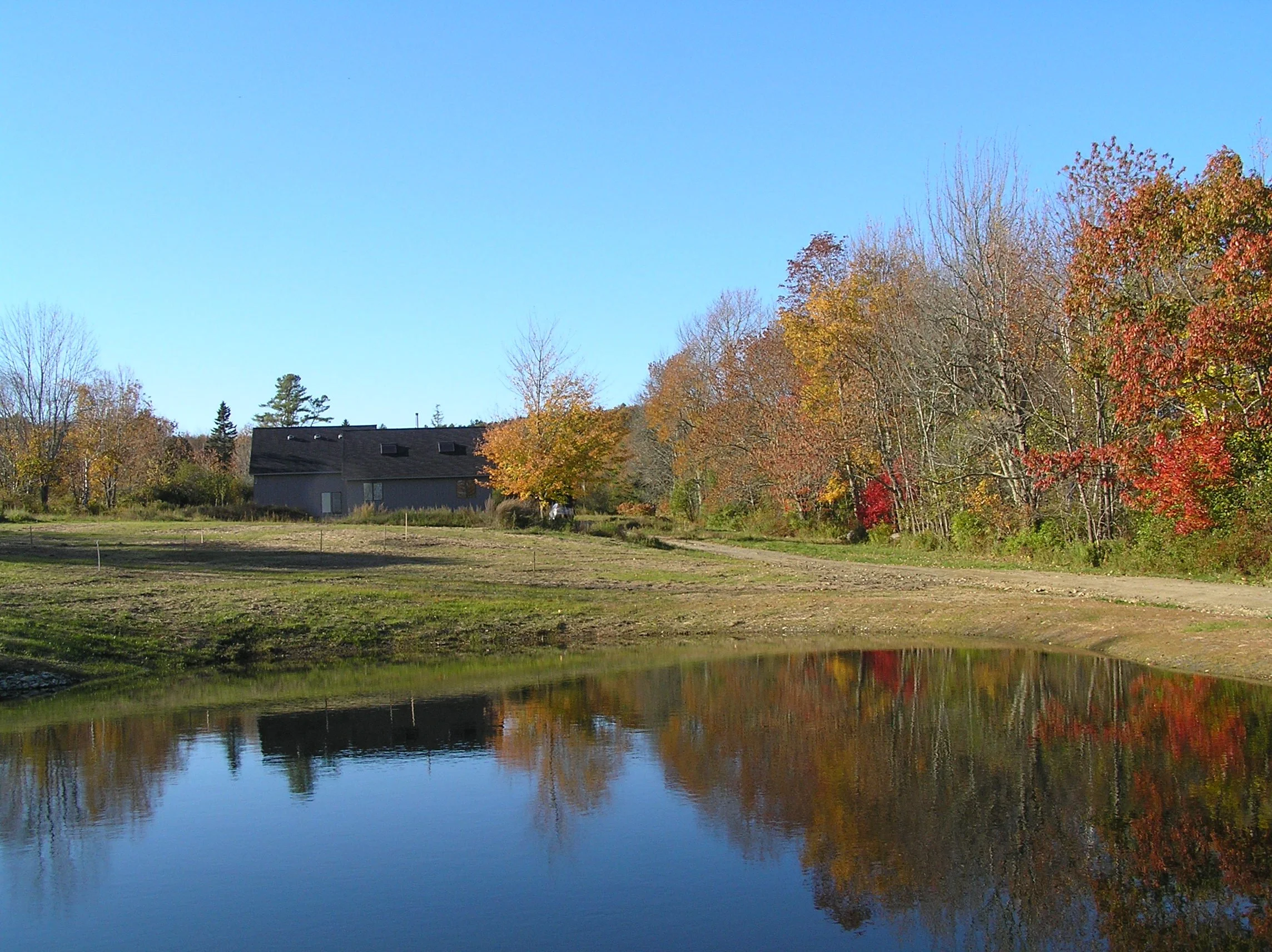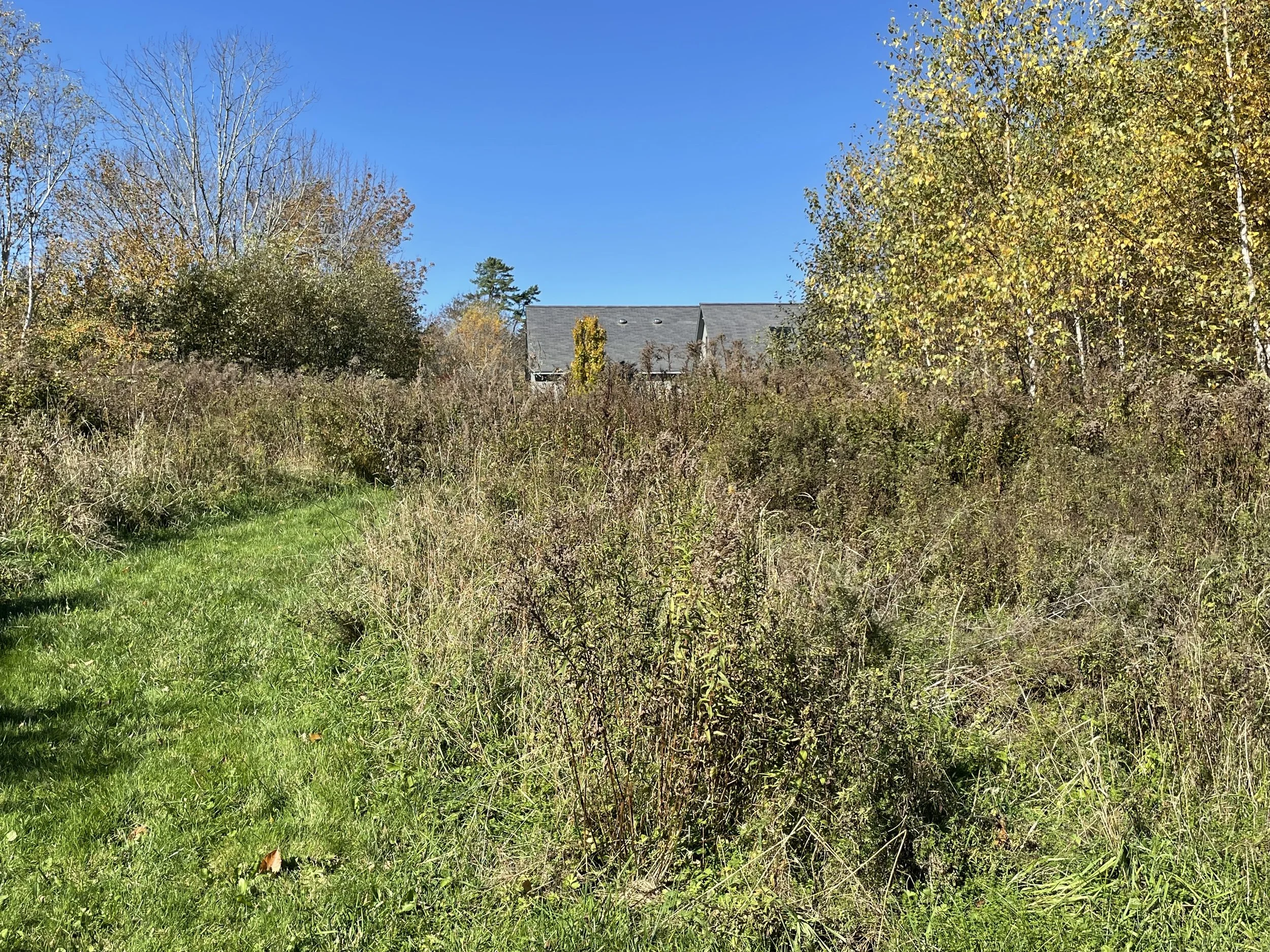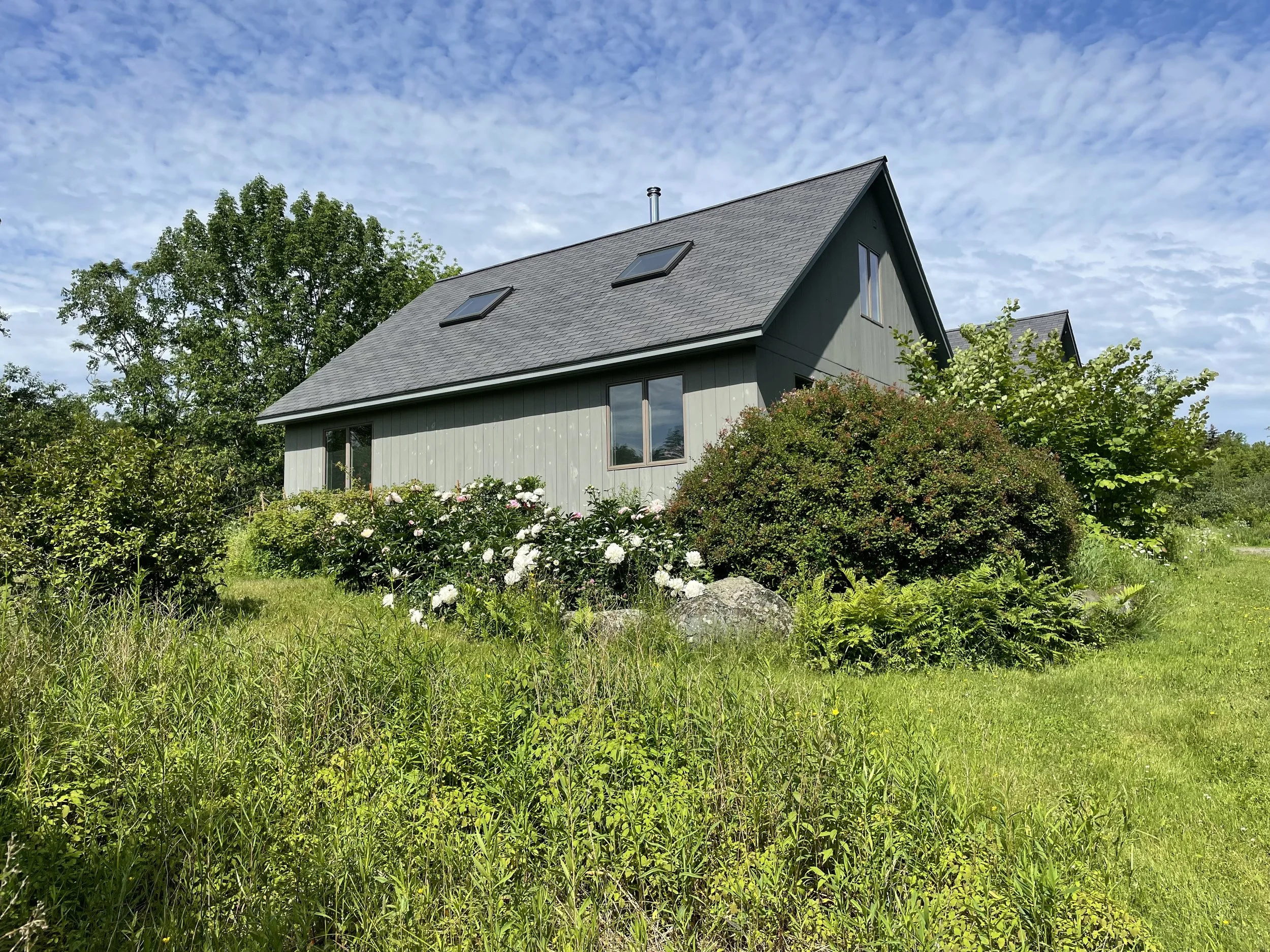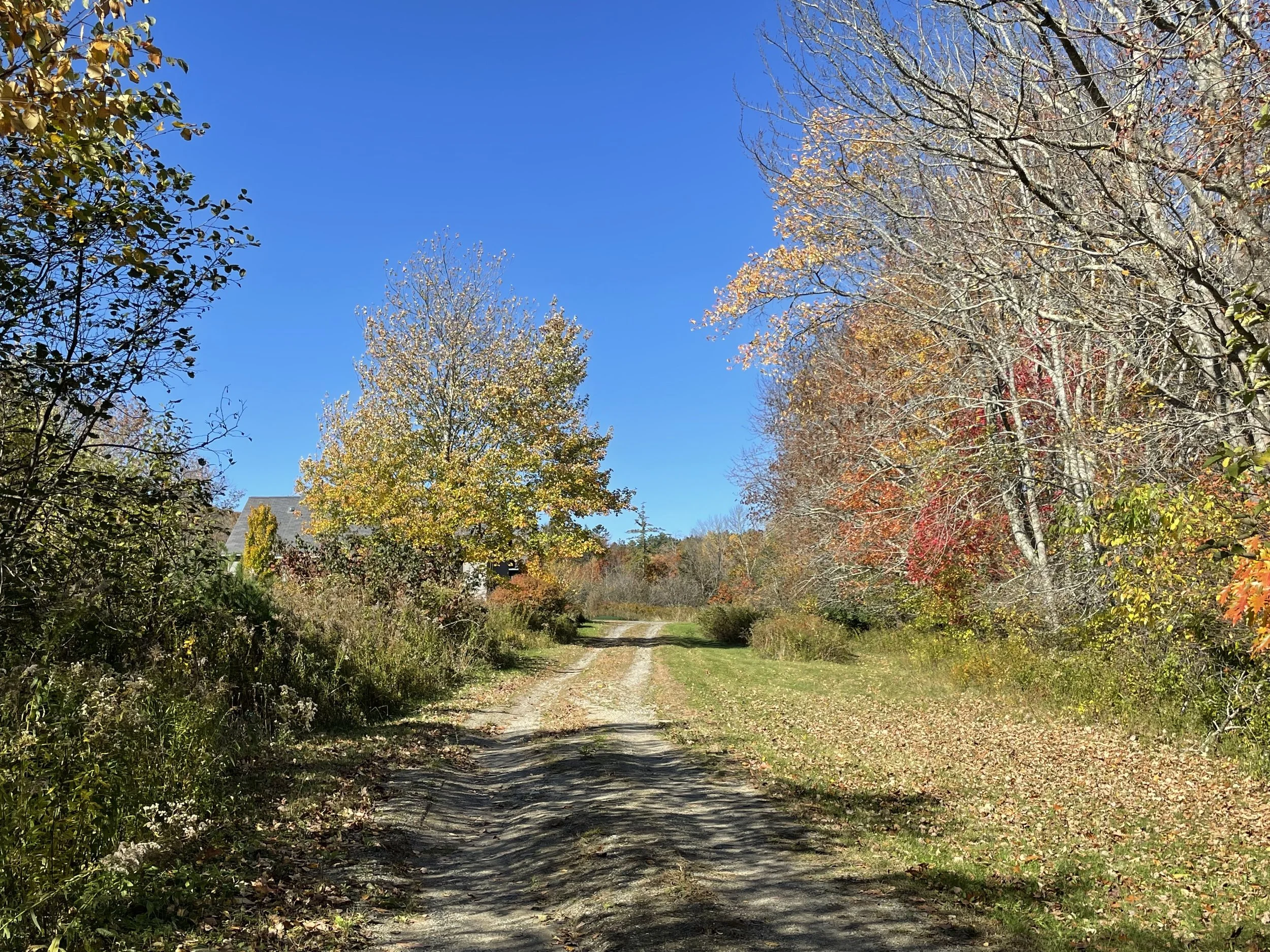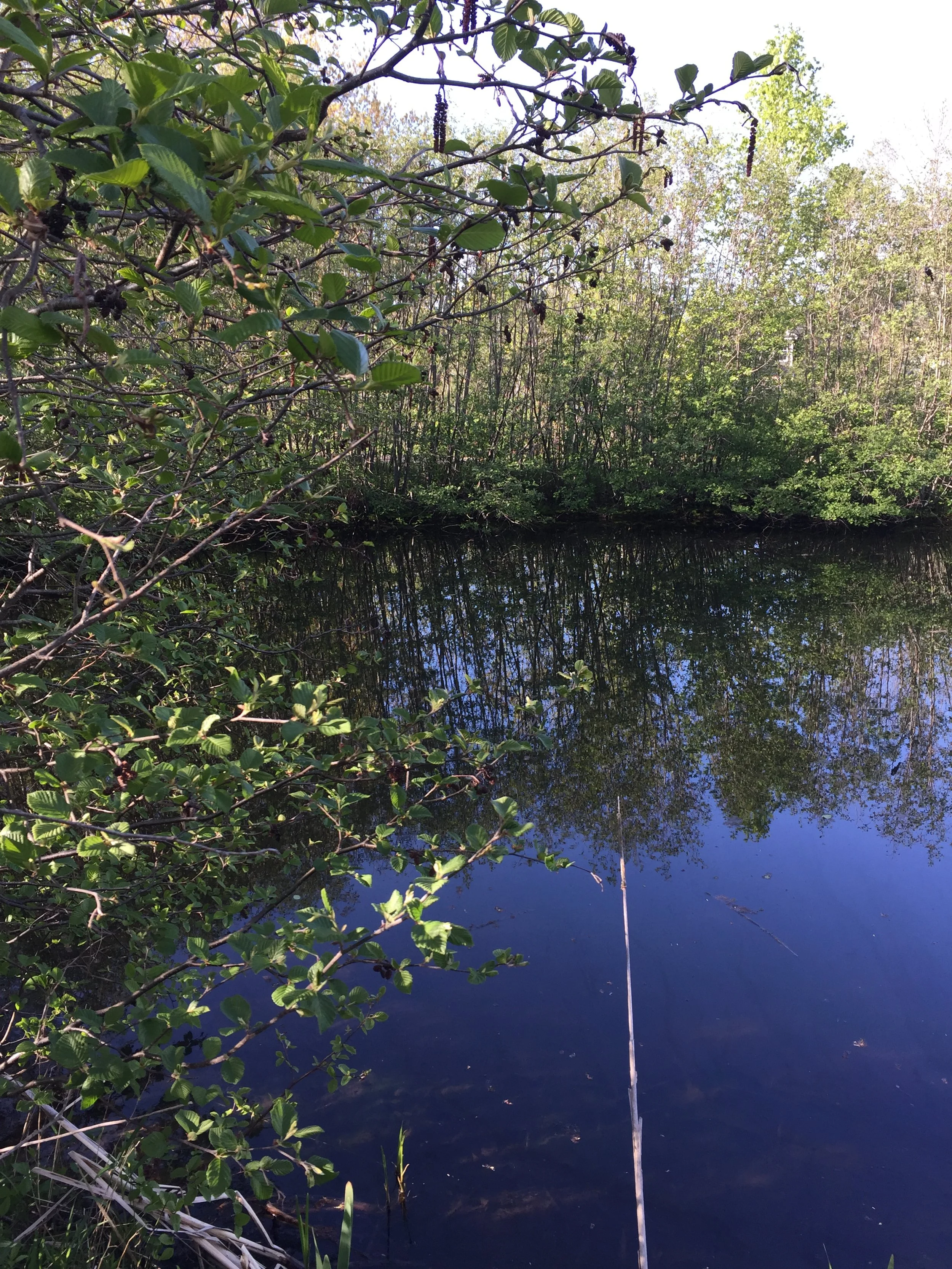
Change
Moving to a new place is a major undertaking, even when that place is within 15 miles of where one’s lived for the past eleven years. Coming from a commercial building in downtown Belfast, Maine, I wanted some green around me. I found it in Lincolnville, 2.5 acres of property with space and mature trees, but an otherwise unremarkable piece of land.
I built a house and dug a pond, and planted a few trees and perennials. Several years passed before I realized how little I actually needed to do to “improve” the landscape. Instead, I needed to learn. I was being gifted by the natural world with an incredible variety of plants and wildlife. Native forbs appeared. New trees sprouted. So did invasive species. All of them had been here all along, and I was giving them room to grow. I began to document the changes.
If you were to walk with me now along the paths in the meadows, we would talk about the work it takes to restore habitat, recognizing native species like silky dogwood and mountain ash, while removing buckthorn and honeysuckle. I could show you where a mink found the freshwater mussels, and what dark-green bulrush (Scirpus atrovirens) looks like. We could talk about the warblers that nest here, the deer, fox, coyote, and muskrat that visit. The landscape is never still, always in movement.
April 2012 - October 2022, Looking East: Five years into living here, an early spring landscape still shows an unobstructed view from the house to Route One. The utility poles that once served as markers for a wet area around the red maple are now seats around the fire pit. The meadows have grown up with asters and goldenrod, prime pollinator habitat. The path leading east from the house forks around a new birch grove.
Looking West, toward the house from the Pond (April 2012- October 2022): Change was slow to come, and it was a process of my noticing how things began to change when left to their own devices. Until 2010 I had the meadows bushhogged annually. Then I stopped, and began to appreciate that a birch grove was appearing in the center of the field. It’s a lovely place to look for birds’ nests, and a magic space to walk through in the fall.
The Pond 2012-2022: Within a year after the pond was dug to take advantage of a naturally wet area, small alders sprouted. By 2012, they had grown into a thick surround for the pond. In the before image, notice the rocks that define the pond inlet, a double culvert bringing water from a creek along the southwest property line. The After image, 2022, shows just how quickly alders and grey birch grow into habitat for migratory and resident warblers. One year, the pond was home to a family of muskrats. I regularly see cormorants and herons passing through.
The Rain Garden: Just outside the studio there’s an accidental and ephemeral rain garden. In Spring, a pair of mallards spends time courting. Wood frogs and peepers, and later on green frogs, come and go. In the very wet part. the mix of plants changes from year to year. Sedges, bog iris, water pepper and arrowvine are reliable anchors, along with sensitive fern. I pull out the bigger plants to keep the view to the raised garden on the back side of the water.
Accidentals and Ornamentals: I’ve done very little ornamental planting, but peonies, Korean spice viburnum and lilacs are essential habitat for me personally. The lilac is a Miss Kim, rescued from another part of the property. The peonies and viburnum are additions. None are native, but notice also the red maple. It is native and flourishes with its feet in a natural seep with sedges and grasses around it. Even the non-natives provide food and shelter for a variety of insects and birds.
South to West, the view from outside the studio, April 2012 to October 2022: The changes here are dramatic, and not just because of the seasonal differences. Notice the ornamental maple in the center that I planted to provide some screening for the houses being built next door, but nature has done a much better job of concealing them than I ever could have. The boundary line now is marked by trees grown bigger, and the rock wall even in winter is thick with brambles and shrub growth.

